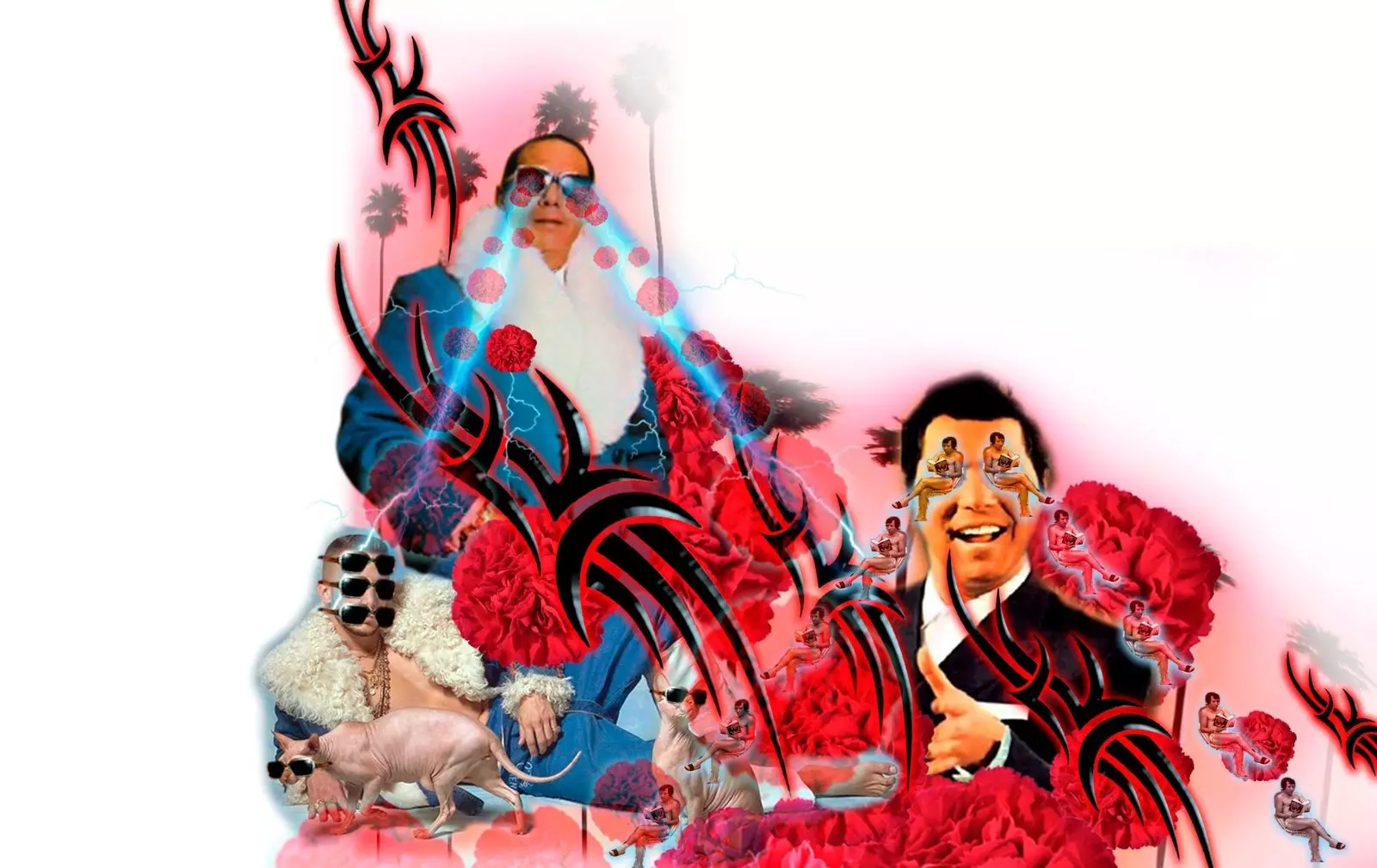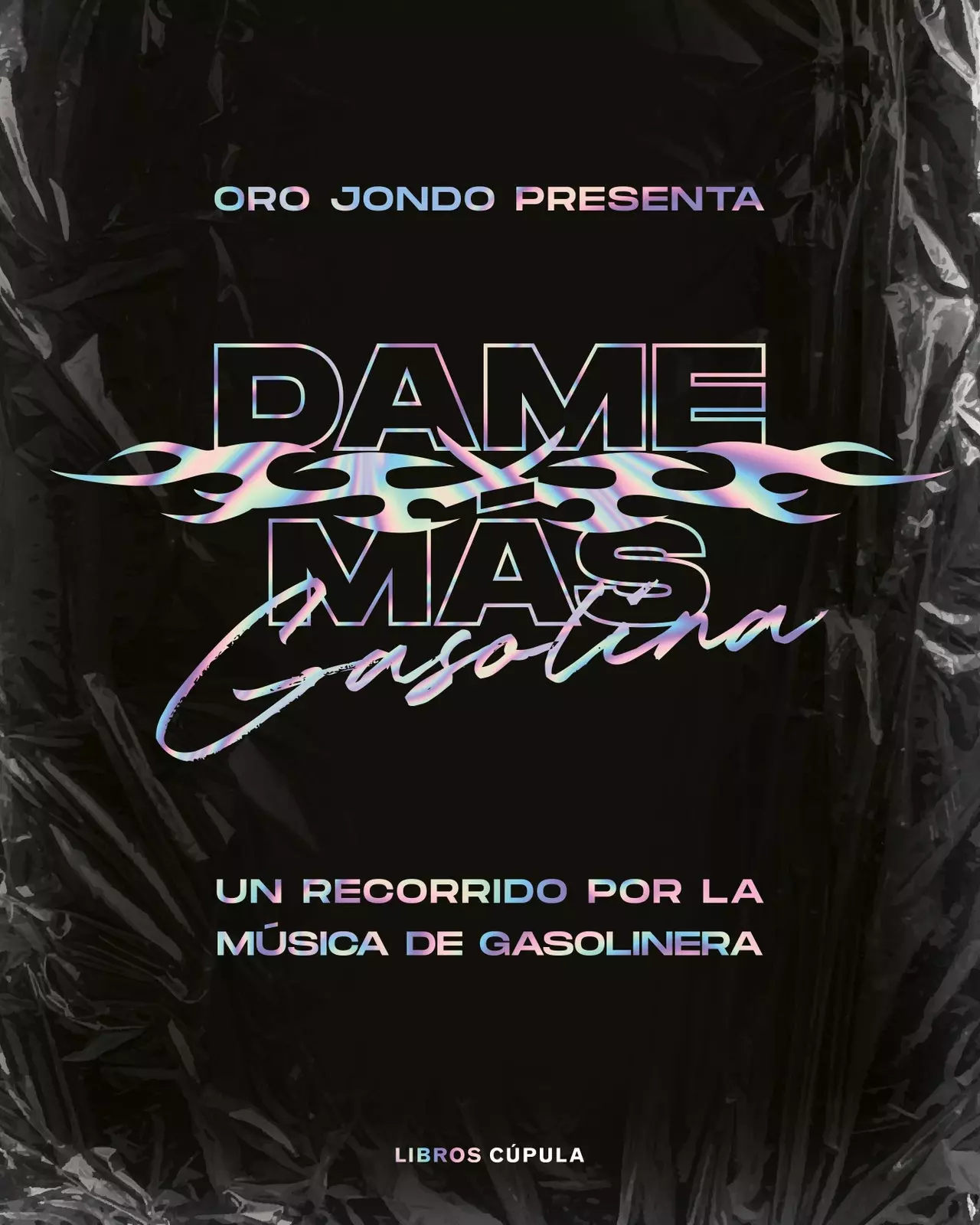
Oro Jondo collage for the book 'Give me more gasoline'
When in 2016 Primavera Sound decided to include Los Chichos on its lineup, a speech that had been brewing for some time in cultured gossips became official: 'gas station music' had become cool . From then on, an open secret has been claimed, with increasing pride -lately, in the book Feria by Ana Iris Simón and in the album El Madrileño by C. Tangana-: it has been the soundtrack of these cassettes, and no other, the one that has been with us throughout our lives . Let's look at the most blatant example: camel , forerunner of techno-rumba, has never been supported by the music industry or by the great mass media, and yet it can be proud to be the second group that has sold the most records in Spain.
To break with this desire to 'hide' and place all these artists, almost always ignored by critics, in the place they deserve in popular culture , Give me more gasoline (Cúpula, 2021), a journey through the gas station music that has marked our country. He himself walks from the popular song to the couplet, from flamenco fusion to techno rumba , from the omnipresent compilations with the songs of the summer, those that marked our school vacations, to the albums of international divas whose choreographies we copied from MTV, such as Madonna or JLo . The phenomenon of reggaeton, of course, also appears in this addictive and informal encyclopedia by Juan Sánchez Porta, included within his multidisciplinary artistic project Oro Jondo.

Planet
Book 'Give me more gasoline'
Book 'Give me more gasoline'
As the same author indicates, "Neither are all those who are, nor are all those who are". "Rather, it is a personal selection, my own, of artists that I think are relevant to make a review of the popular music that has accompanied us from the last century to the present". With a casual language, ultra contemporary references -"I will say what Dakota Tárraga dropped one random day in a story", he points out in the introduction- and the tone that a friend would use to send you a Whatsapp, Sánchez gathers the juiciest bits of information on the lives and works of stars big and small , ranging from Concha Piquer ("Doña Concha" to him) to Tony El Gitano.
Did you know, for example, that May 28 is 'Camilo Sesto Day' in Nevada (USA)? Or that the singer and sex symbol Rosa Morena rubbed shoulders with Judy Garland, Sinatra and Sammy Davis Junior before succeeding in Spain? Or that techno-rumba, the undisputed leader of gas station music, was the last genre of Spanish origin? What the bakala song of Chimo Bayo That's the way I like it Has it been the song made in Spain that has appeared the most on different albums around the world? Nothing happens, Sánchez has taken care of looking for it for you in fanzines, podcasts, programs, Wikipedia and even in his own television memory.
THOSE ON THE MARGINS
with his rabidly current and always hilarious speech, the author not only takes care, as we have said, of putting in the place that corresponds to the voices that have shaped the sound panorama of Spain -" The Hungarian is the Britney Spears of Andalusia , the princess of pop por rumbas"-, but also of sift his stories through the gender perspective , valuing those women who** were feminists even without knowing what that was**. Like Antoñita Peñuela, who "sang to female empowerment and women's freedom, encouraging her to do whatever she wants with her best-known song, La espabilá." Or even the copla singers, with their verses about " free women, single mothers, prostitutes, married lovers , women who get drunk in bars, women who live passionately, women of the margins who were not at all the ideal woman that was wanted in the Franco regime".
Of course, those who wrote these immortal songs were men: " The songs were largely written by fagots that they could not express their feelings freely," Sánchez points out. In fact, the LGBTIQ+ collective also has a great presence in these pages: Regarding Perlita de Huelva, he says: "I am sure that it served as inspiration for the pioneering national transformism. And it is that both Perlita and many of her folkloric companions, without knowing it, were pioneers in the current idea that drag does not have to attend to genres ". About Sara Montiel:" she never considered herself folkloric, she was a star, a diva, a fagot with a pussy like the top of a pine tree , understanding 'madness' as a great virtue, a woman who lived as she pleased and intensely savored the honeys of success". About Bambino: "He himself declared: ' Men, women, I do not make differences, mine are wild loves '. His freedom helped make a hidden Spain more visible."
The difficulties encountered by minorities such as the Gypsy town , another collective 'on the margins', to gain respect in the music industry. "The most genuine pop that has probably ever been made in Spain was forged, gypsy pop, which was something like the Motown artists in the United States, and furthermore, subjected to similar cultural apartheid ", collects the author in Give me more gasoline. These are the words of Virginia Díaz referring to the gypsy pop of the 70s, in Cachitos de Hierro y Cromo, another of the programs that have done the most to bring to the current conversation the music that has marked the rhythm of the Spaniards and Spaniards.
Later, regarding the Vallecan rumba of artists such as Los Chichos (with more than 22 million copies sold behind them) or Los Chungitos, it is noted: "They coexisted in Madrid with the phenomenon of La Movida. Really, the most modern, authentic, genuine and avant-garde (unintentionally) were these groups of gypsies who sang happily to the fatalities of destiny, facing the fake pose of the moderns that made up La Movida , which, with much more pretentious proposals, ended up monopolizing the art scene due to institutionalization and the support from the power they had".
In fact, as the author points out, It is the music made by singers of humble origins that has ended up setting the sound of Spain , from copla and flamenco performers to reggaeton priests: "Reggaeton was embraced in Spain by humble people who felt left out and that he was struggling to climb the social ladder in a system that does not contemplate them, that isolates and criminalizes them. For this reason, these environments, which were dominated by the flamenco sound, saw these problems reflected in reggaeton, since, although it came from a very distant environment, it was similar in these matters Sanchez writes.
Another example that also points to the discrimination of these sounds: with respect to the well-thumbed machismo in reggaeton , Sánchez subscribes to the words of DJ Flaca: "We must not insist that reggaeton is sexist, we must insist that all genders are sexist . Machismo is present in all forms of art. Why are you noticing that only reggaeton is sexist and the rest of the genres are not? There is something weird there. Isn't it racism... or classism?".
PURE HISTORY OF SPAIN
Despite the fact that the river of information on this Oro Jondo project is as wide as it is delicious, perhaps the most striking aspect of the volume is the collages that accompany each of the texts. Kitsch, baroque, bizarre, camp, very connected to the digital and with a vaporwave halo, these witty works of art, which drink from the covers of techno-rumba albums, summary , somehow, the spirit of each artist.
They are also somewhat reminiscent of other impossible designs, those of the summer compilation albums. It seems incredible that there were titles like Full Rambo , with the double of Rambo in Spain on the cover; See you soon, Lucas , with a fake Chiquito as the image; Currupipi Mix , with Jesulín de Ubrique (Currupipi was the name of his tigress), and even Bombshell Mix, which referred to attempted assassination of Aznar by ETA . "Most of these records were riddled with fake songs , of crappy versions in which the name of the interpreter was played with so that it seemed that the original sang it. For example, they played the song Believe (by Cher) performed by Cheers and so on all the time. " Do we really live in that Spain?
Another resource that Sánchez uses to expand and provide three-dimensionality to his words is the adding a QR code at the bottom of each page , with a YouTube playlist created especially by him in which the most well-known and iconic songs of each artist are collected, as well as their most legendary moments on television , which are already part of the country's imaginary: Monica Naranjo ripping off her wig and appearing bald in one of her first cathodic apparitions in Spain; El Tijeritas forgetting the name of one of her multiple partners in Patricia's Diary; the time that the bakalao group New Limit performed in front of an audience of six years on public television and even the spot in which Marujita Díaz announced a polytone with his characteristic eye movement.
The selection of videos is not wasted. In an interview by Jesús Quintero included in his exceptional list of Lola Flores, for example, La Faraona is heard pronouncing one of her most legendary phrases: "You can do anything in life. You give yourself a hairline one day and nothing happens, you smoke a joint and nothing happens , you can get drunk on red wine and nothing happens. Everything can be done in life with METHOD. And after three quiet days drinking mineral water, eating a very good stew or a pringá ". We must thank Sánchez for having compiled all this history of Spain for those who lived it, for those who, like many of us, were born late to remember it, and, above all, so that all those who have never lived it understand the curiosities and the greatness, often hidden and misunderstood, of our musical legacy.
